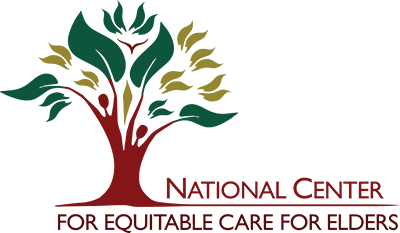By Dr. Shoshana Streiter, M.D., Brigham and Women's Hospital's Division of Aging
 There’s wisdom to the old adage that if your only tool is a hammer, every problem looks like a nail. One of the most effective tools available to health care providers is pharmacology. With medications, clinicians can control diabetes, manage blood pressure, stabilize moods, eradicate harmful bacteria, and more. But pharmacology isn’t the only tool at hand and not every problem lends itself to a pill-shaped solution.
There’s wisdom to the old adage that if your only tool is a hammer, every problem looks like a nail. One of the most effective tools available to health care providers is pharmacology. With medications, clinicians can control diabetes, manage blood pressure, stabilize moods, eradicate harmful bacteria, and more. But pharmacology isn’t the only tool at hand and not every problem lends itself to a pill-shaped solution.
In Geriatrics, clinicians caring for older adults must balance the benefits of medicines that support health and prevent disease with the risks of polypharmacy. Although the word polypharmacy is a simple one, derived from the Greek poly, meaning “many,” and pharmaka, meaning (in its original sense) “medicinal herbs”, defining what constitutes many medications is controversial.
Many definitions have been proposed in the literature, ranging from just two or more medications a day (a rarity on a typical internal medicine hospital floor!) to 11 or more (probably not a rarity), with a count of five or more medications a day being one of the more commonly accepted definitions (Masnoon, 2017).
Rather than focusing solely on the number of medications a patient takes, a helpful nuance to consider is the distinction between appropriate and inappropriate polypharmacy. For example, an older adult with coronary artery disease and diabetes, two common diseases, might take a daily aspirin, a statin, an ACE inhibitor, a beta blocker, and metformin. Such an individual meets a strict definition of polypharmacy based on a simple pill count, yet this polypharmacy might be necessary for preserving health.
The risks of inappropriate polypharmacy are significant. The more medications a person takes, the greater the risk of an adverse drug event and the greater the likelihood that the person will not take the medications precisely (or even approximately) as prescribed (Franco, 2017). For older adults, this likelihood increases if the individual in question has a disease of memory, visual impairment, or difficulty with fine motor tasks such as sorting through pills.
Moreover, risks of adverse drug events are accentuated in older adults who are likely to be prescribed more medications than their younger counterparts and who may manifest age related changes in drug absorption and metabolism. Geriatricians must constantly review medication regimens and consider whether the medications prescribed twenty years ago are still beneficial for their patient today.
There are an array of tools available to clinicians trying to optimize medication regimens by decreasing inappropriate polypharmacy in older adults (Scott, 2015). One popular resource is the Beer’s list, a compendium of medications first developed in 1991 and recently updated earlier this year, which enumerates medications that are potentially harmful to older adults. Another is the START/STOPP prescription criteria (Screening Tool to Alert doctors to the Right Treatment/Screening Tool of Older Person’s Prescriptions), which lists both recommended and potentially harmful pharmacotherapy.
Useful online resources include deprescribing.org and medstopper.com, which provide clinicians with guidance about prioritizing medications to deprescribe and monitoring for drug-withdrawal adverse events during the process.
Perhaps the most effective tool for deprescribing, however, is the partnership of the patient. Before embarking on the process, it is critical to ascertain the patient’s interest in decreasing daily pill count. Asking questions such as “Are you taking any medications which you would like to see if you can stop?” and “What are you hoping [insert medication name] will do for your health?” is a simple way for clinicians to gain insight into the perspectives and goals of their patients. Addressing polypharmacy without this insight can be a Sisyphean task.
In Geriatric medicine, “drug side effect” is virtually always a potential cause of a symptom. And it’s well-accepted that while many problems can be mitigated by medication, many others can be mitigated by stopping a medication.
Polypharmacy refers to the use of multiple medications and/or prescribing more medication than clinically indicated. Often, a medication is prescribed to counteract a side effect or adverse drug reaction from another medication. Additional resources for gerontological polypharmacy are available on the Gerontological Advanced Practice Nurses Association website.
Check Your Meds Day was designed to encourage patients and consumers to bring their prescription medications and supplements to their local pharmacy and primary care physician for a review. To learn more about Check Your Meds Day and to access additional resources, visit the NCPA website.
References
Franco, J. V. A., Terrasa, S. A., & Kopitowski, K. S. (2017, September 18). Medication discrepancies and potentially inadequate prescriptions in elderly adults with polypharmacy in ambulatory care. Retrieved October 2019, from http://www.jfmpc.com/article.asp?issn=2249-4863;year=2017;volume=6;issue=1;spage=78;epage=82;aulast=Franco.
Masnoon, N., Shakib, S., Kalisch-Ellett, L., & Caughey, G. E. (2017, October 10). What is polypharmacy? A systematic review of definitions. Retrieved October 2019, from https://www.ncbi.nlm.nih.gov/pmc/articles/PMC5635569/.
Scott, I. A., Hilmer, S. N., Reeve, E., Potter, K., Le Couteur, D., Rigby, D., … Martin, J. H. (2015, May). Reducing inappropriate polypharmacy: the process of deprescribing. Retrieved October 2019, from https://www.ncbi.nlm.nih.gov/pubmed/25798731.
